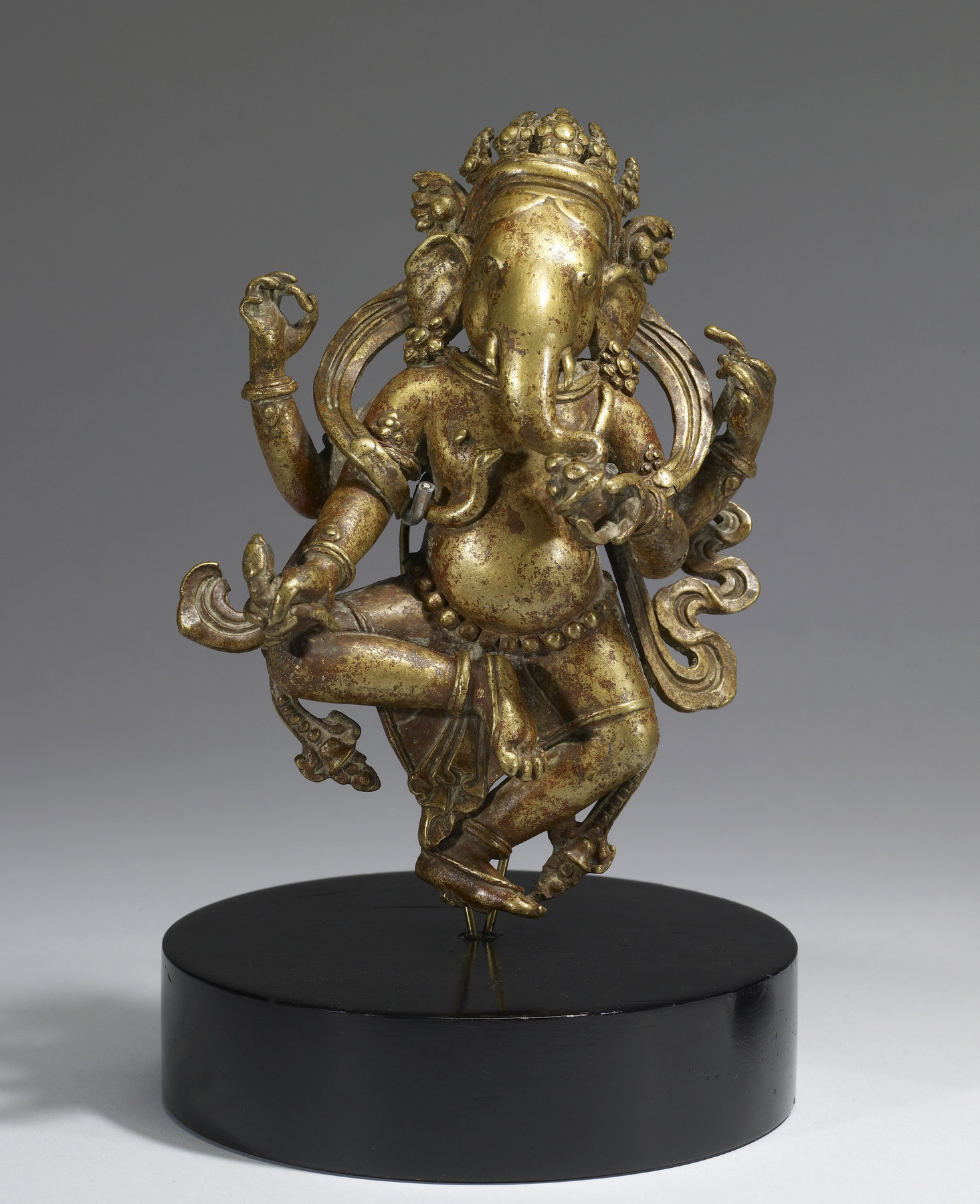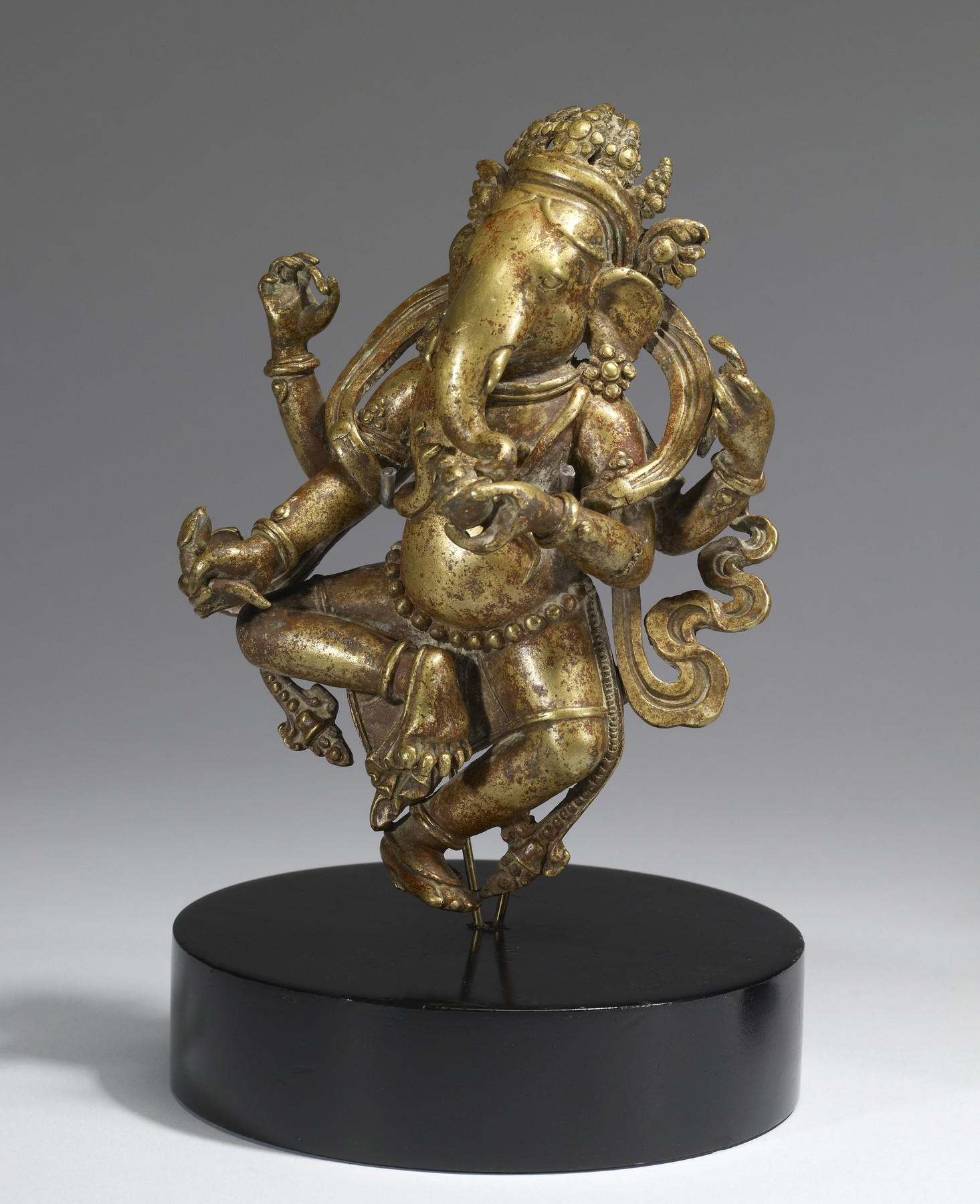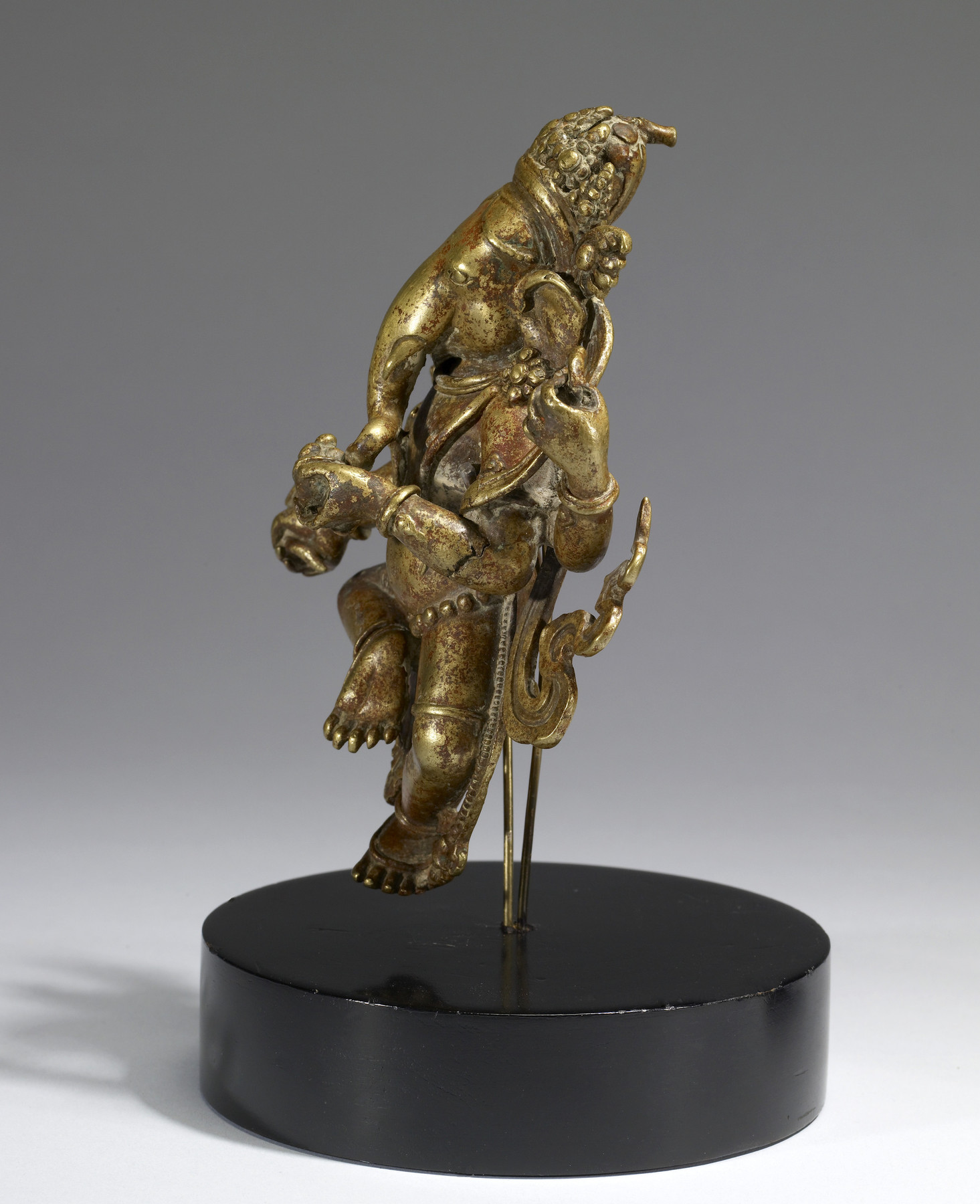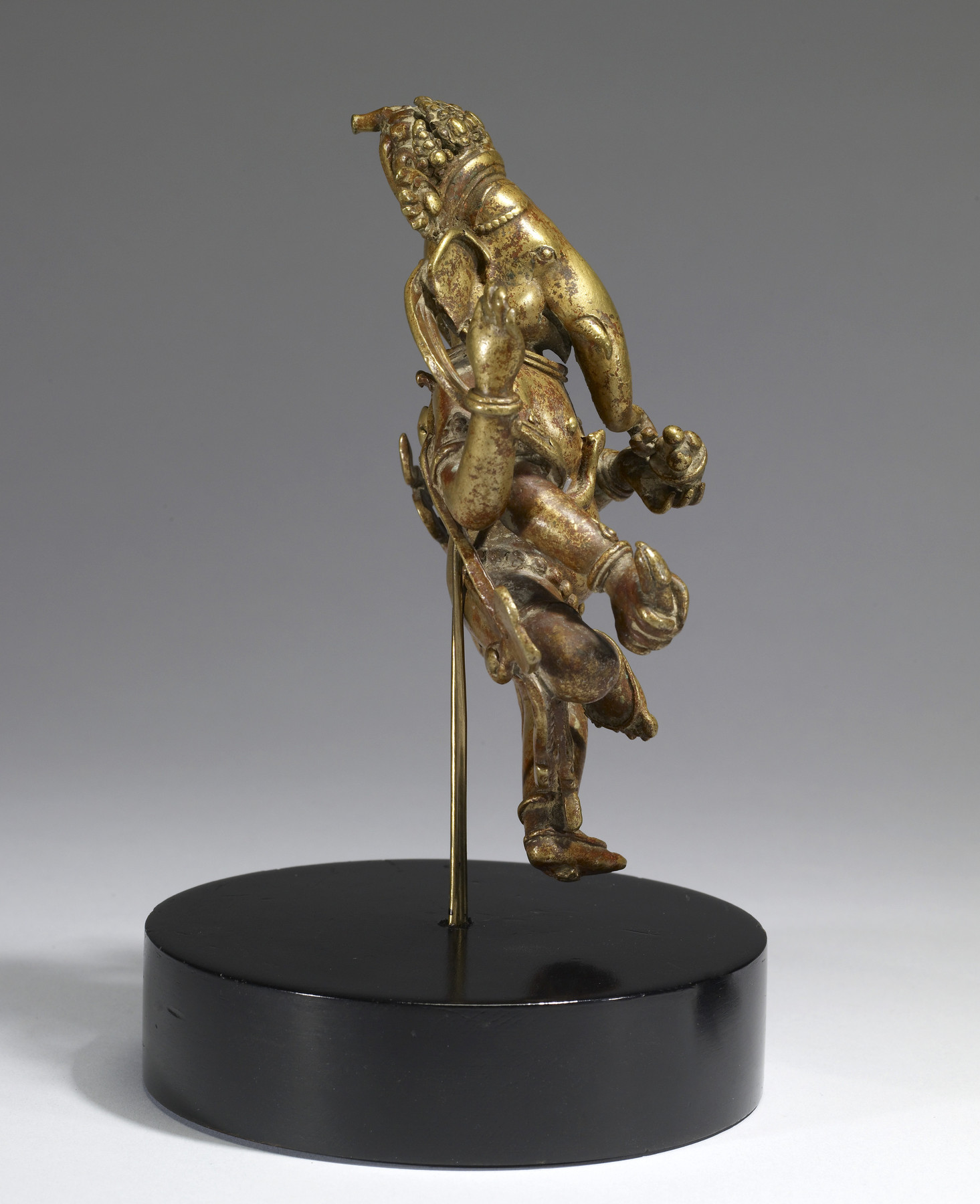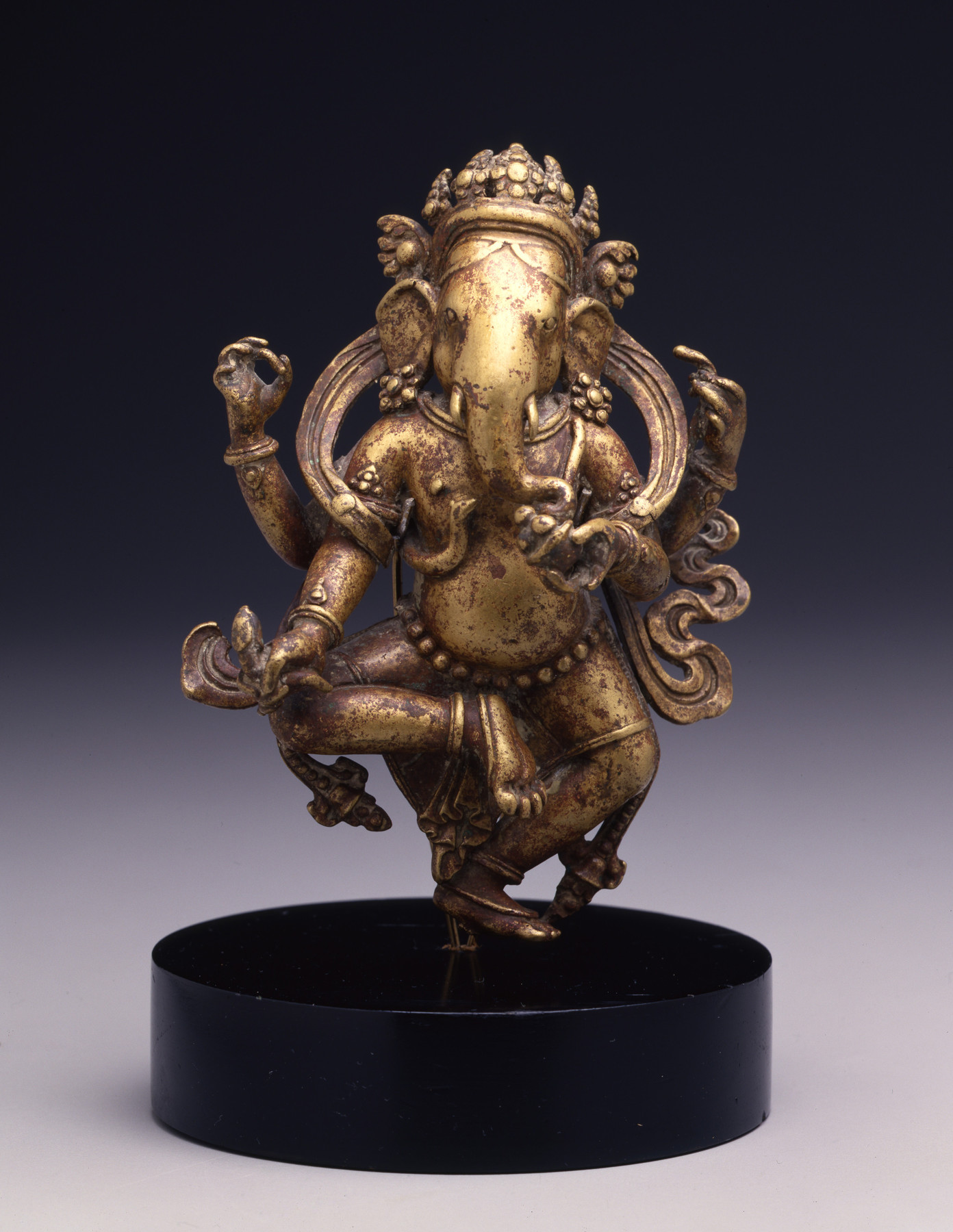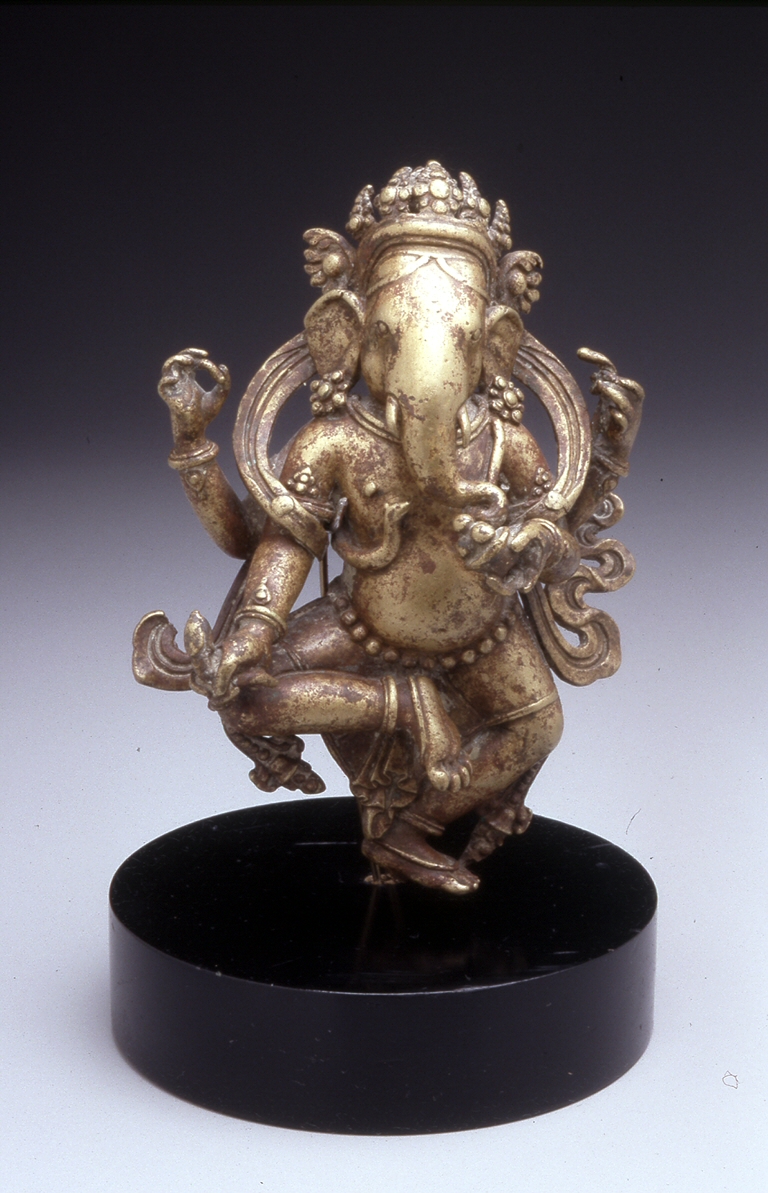Dancing Ganesha
(India, Nepal, and Tibet)
Ganesha, lord of obstacles, can both create and remove challenges to success, and he is worshiped for his divine favor. In Nepal, where this sculpture was made, both Hindus and Buddhists worship Ganesha. He is associated with abundance and wealth, as his well-fed body suggests. His favorite sweets, held in a bowl in his lower left hand, are always in plentiful supply, and the radish held in his lower right hand carries associations with fertility and abundance. Here, Ganesha also holds a snake in his upper left hand; his upper right hand may once have held prayer beads. A second serpent encircles his waist, echoing the shape of the trunk that reaches into the bowl of sweets; it looks up at the elephant-headed god in reverence, adding to the sculpture’s dynamism as we imagine its slithering motion around the dancing deity.
This sculpture may have been made for a Hindu or Buddhist devotee; both traditions worship Ganesha.
Provenance
Provenance (from the French provenir, 'to come from/forth') is the chronology of the ownership, custody, or location of a historical object. Learn more about provenance at the Walters.
John and Berthe Ford, Baltimore; given to Walters Art Museum, 2002.
Geographies
Nepal (Place of Origin)
Measurements
H: 6 1/16 × W: 4 5/16 × D: 2 3/16 in. (15.4 × 11 × 5.5 cm)
Credit Line
Gift of John and Berthe Ford, 2002
Accession Number
In libraries, galleries, museums, and archives, an accession number is a unique identifier assigned to each object in the collection.
In libraries, galleries, museums, and archives, an accession number is a unique identifier assigned to each object in the collection.
54.3011

